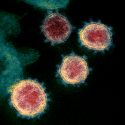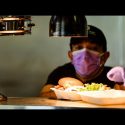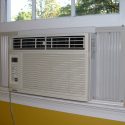COVID questions: Transmission after vaccine, face mask effectiveness
Editor’s note: We will be publishing answers to questions about COVID-19 and the pandemic each week in this COVID questions column. If you have a question, please email it to covid19update@uc.wisc.edu.
Q: Once a person has been immunized (both shots) and completed self-quarantine following the both immunizations, that person is assumed to be successfully immunized. However, while that person may be immune, could that person still be a “carrier” who could infect others?
A: The phase 3 clinical trials of the vaccine only have looked at the benefit of the vaccine in preventing illness (mild, moderate and severe). They were not designed to provide information on transmission of SARS-CoV-2. Therefore, we do not know whether a vaccinated individual may still have the ability to transmit this virus.
– Jonathan L. Temte, MD/PhD, associate dean for Public Health and Community Engagement, University of Wisconsin School of Medicine and Public Health
Q: I have a few family members who do not believe in the effectiveness of wearing a cloth mask. Do you know of any scientific, peer reviewed studies (at UW–Madison or elsewhere) that prove the effectiveness of wearing of a cloth mask?
A: Scott Sanders, a professor in UW–Madison’s Mechanical Engineering Department, suggests this scientific brief on the community use of cloth masks from the Centers for Disease Control.
The brief notes, “Multi-layer cloth masks can both block up to 50-70% of these fine droplets and particles and limit the forward spread of those that are not captured. Upwards of 80% blockage has been achieved in human experiments that have measured blocking of all respiratory droplets, with cloth masks in some studies performing on par with surgical masks as barriers for source control.”
Sanders, an expert in measuring gases and particles in internal combustion engine processes, has pivoted his research to study mask materials, construction, fit and filtration. In this video, Sanders demonstrates how droplets from a cough escape from or remain inside masks of varying styles and materials.
See more answers to COVID questions at https://news.wisc.edu/tag/covid-questions/. Also, visit our COVID-19 impact site.
Tags: COVID questions, covid-19, health & medicine



